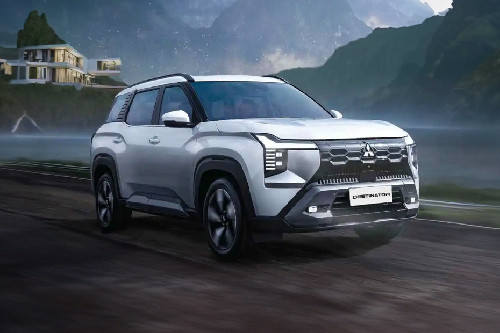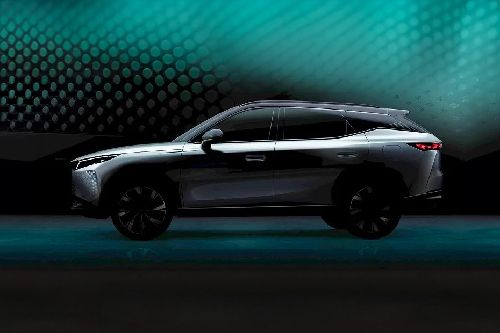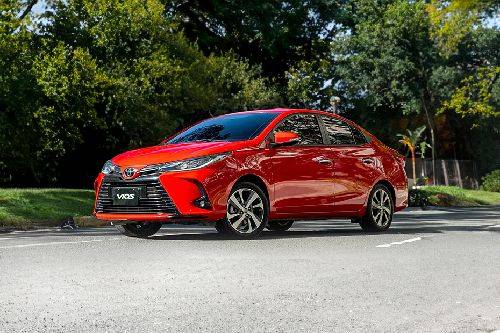Illumination ahead: The different kinds of car headlights

Car headlights have evolved from mere bulbs to different light sources that aim to not only illuminate the road ahead, but also influence the car’s design and safety.
KEY TAKEAWAYS
What are the common and unique technologies found in car headlights?
There are three different types of car headlight bulbs most commonly seen at present. That’s halogen, xenon, and LED, which is the newest, most energy-efficient type of automotive light. Matrix and laser lights are mostly found in high-end vehicles.How do matrix and laser car headlights work?
Pixel lighting is another name for matrix lights. A headlamp is made up of several separate individual LEDs, each of which is regulated independently to prevent dazzling other road users.Laser lighting have a much greater headlight throw than any other kind of headlight. The road ahead can be illuminated by laser lights for around 600 meters.There are three different types of car headlight bulbs most commonly seen at present. That’s halogen, xenon, and LED — the last being the newest, most energy-efficient type of automotive light.
Car design generally dictates what type of bulbs are used. Smaller, more affordable cars are most likely to have halogen headlight bulbs, while those with sportier styling will be designed to have narrower headlight units, so they’re likely to use xenon bulbs.
Although the newest LED bulbs are frequently utilized as daytime running lights on new automobiles, because they are the most expensive to make, they’re still mostly employed as headlights on top-tier, luxury, and sporty models.
Halogen bulbs
Halogen bulbs have been in use for more than 50 years, but they’re still commonly utilized because they are the most affordable to produce and replace. The humble Suzuki S-Presso is one vehicle that uses halogen bulbs.

While halogen bulbs also employ a tungsten filament, they’re instead filled with halogen gas that makes the filament glow more brightly and last longer.
Xenon or high-intensity discharge (HID) bulbs
High-intensity discharge (HID) or xenon bulbs feature an arc between its two electrodes rather than a filament. These bulbs need a high-voltage starter to ignite the gas and a control device to maintain the bulbs’ illumination since in many countries, the law states that they operate at 80% of their potential within four seconds of being turned on. Metal salts maintain the arc's flame despite the fact that xenon is the gas used to ignite it.
Prior to recently, the majority of automobiles with xenon lights also necessitated using headlight washers and a self-leveling system to maintain downward light projection regardless of how fully loaded the vehicle is. Due to their higher production costs, halogen bulbs have been the standard for many years among auto manufacturers.

But thanks to the development of lower light output bulbs that don’t require lens washers or self-leveling systems, manufacturers have seen a 50% reduction in xenon bulb costs.
Consequently, they are now being provided on an increasing number of smaller automobiles and lower trim levels of models in different segments.
LED lights
Although xenon bulbs typically last much longer than halogen lamps, they can lose some of their brightness with time, rendering them unsafe for use at night. Some manufacturers advise switching out xenon bulbs every three years.
Because they’re more energy-efficient, longer lasting, and flexible enough for automakers to design recognizable light forms, LED lights are now replacing xenons in new cars.
Instead of using a filament or an arc, LED bulbs use one or more light-emitting diodes to conduct energy. While the brightness of the light is comparable to that of a xenon bulb, LED bulbs are more effective and less expensive to operate because they don't generate as much heat.

One issue is that if an LED bulb's electronics malfunction, the entire light unit will typically need to be replaced. This is problematic because it will be highly expensive and impractical to do so when automobiles are older and worth considerably less.
However, certain LED bulbs already exist that don't require being soldered into position inside of a light unit and can be changed out individually.
Matrix lights
Pixel lighting is another name for matrix lights. A headlamp is made up of several separate individual LEDs, each of which is regulated independently. Behind the internal rearview mirror is a camera that can recognize the headlights and taillights of moving vehicles. To prevent dazzling other drivers, the technology shuts off each individual LED when it senses a vehicle.

Therefore, automobiles’ matrix headlights don’t cast light both horizontally and vertically. In this manner, a driver is able to use high beam headlights even while oncoming traffic is present.
In some Audi cars, matrix lights provide better outward visibility for the driver and safety for other road users.
Laser lights
The most cutting-edge headlamp technology currently on the market is laser lighting. The biggest benefit of laser lights is that they have a much greater headlight throw than any other kind of headlight. The road ahead can be illuminated by laser lights for around 600 meters.
Lasers are used in laser lights to energize gas, and then, the gas burns extraordinarily brightly as a result.

For their superb brightness, laser lights are considered the best car headlight type. These are typically found on high-end luxury vehicles and as an optional extra that cost pretty a penny. So, naturally, the laser light technology is found in cars of upscale caliber like BMWs.
Photos from Suzuki Philippines Inc, Audi, BMW, Roy Robles, and Dylan Afuang
Sell your car at the best price
 Verified and genuine buyers
Verified and genuine buyers
Trending & Fresh Updates
- Latest
- Popular
You might also be interested in
- News
- Featured Stories
Featured Cars
- Latest
- Upcoming
- Popular
Latest Car Videos on Zigwheels

Car Articles From Carmudi
- journal
- advice
- financing
- insurance













































































